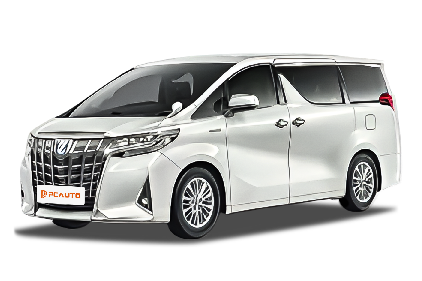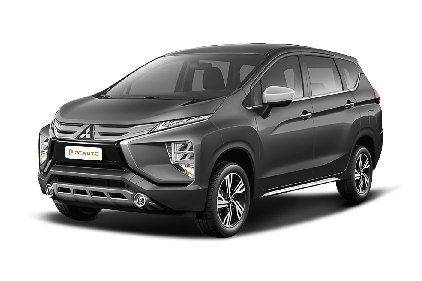Q
What is the mileage of Harrier 2018?
The fuel economy of the 2018 Harrier varies by drivetrain and powertrain setup. The 2.0L naturally aspirated front-wheel-drive version has an official combined fuel consumption of approximately 6.8L/100km, while the 2.0T turbocharged all-wheel-drive variant comes in around 7.3L/100km. Actual fuel usage may fluctuate slightly depending on driving habits and road conditions. This midsize SUV features Toyota's proven powertrain, striking a balance between power delivery and fuel efficiency, with its Dynamic Force engine technology achieving energy saving performance through optimized combustion efficiency. If fuel economy is a priority, it's advisable to regularly maintain tire pressure, avoid sudden acceleration and hard braking, and make proper use of the ECO driving mode. Among same level models, hybrid versions typically offer better fuel economy figures but require weighing the difference in purchase costs. It's worth noting that vehicle load and air conditioning usage frequency also significantly impact real-world fuel consumption, so owners are recommended to refer to official data while evaluating based on their own usage scenarios.
Q
What is the fuel consumption of the Harrier 2018?
The fuel economy of the 2018 Harrier varies depending on the drivetrain and powertrain configuration. The 2.0L naturally aspirated front-wheel drive version has a combined fuel consumption of approximately 6.8L/100km, while the 2.0L turbocharged all-wheel drive version is slightly higher at around 7.3L/100km. Actual fuel consumption can be affected by driving habits, road conditions, and maintenance status. This vehicle features optimized engine technology and a lightweight body design, which help improve fuel efficiency, and it also comes with an ECO driving mode to further reduce fuel consumption. In daily driving, maintaining smooth acceleration, using cruise control properly, and regularly replacing the air filter can all improve fuel efficiency. It's worth noting that hybrid models are generally more fuel-efficient than traditional gasoline-powered vehicles. If energy conservation is a priority, the hybrid version may be a better choice, but it's necessary to balance the purchase cost with long-term fuel savings.
Q
What kind of engine is in the 2018 Toyota Harrier?
The 2018 Toyota Harrier offers two engine options depending on the market: a 2.0-liter inline-four naturally aspirated engine (3ZR-FAE) and a 2.5-liter inline-four hybrid system (2AR-FXE). The 2.0-liter engine delivers around 150 horsepower, paired with a CVT transmission, focusing on smoothness and fuel efficiency. The hybrid version combines a 178-horsepower gasoline engine with an electric motor, resulting in a combined output of 197 horsepower and using an E-CVT transmission, making it better suited for users seeking low fuel consumption and a quiet driving experience. Both engines feature Toyota's proven Dual VVT-i variable valve timing technology, optimizing power response and combustion efficiency. As a mid-to-high-end SUV under Toyota, the Harrier's powertrain is tuned for comfort, ideal for city roads and long-distance driving. Notably, the hybrid version is equipped with a nickel-metal hydride battery pack, whose reliability has been market-tested for years with relatively low maintenance costs, while the naturally aspirated version continues Toyota's tradition of engine durability, suitable for consumers valuing practicality. When choosing, consider your daily driving mileage and preferences: the hybrid version offers more significant fuel savings in traffic congestion, while the naturally aspirated version has a slight advantage in later maintenance.
Q
What kind of maintenance does the 2020 RAV4 Hybrid need?
The 2020 RAV4 Hybrid, as a hybrid SUV, has slightly different maintenance needs compared to regular gas-powered vehicles. It's recommended to get basic maintenance every 6 months or 10,000 kilometers, which includes changing the full synthetic oil and oil filter, along with checking the brake system, tires, and suspension components. Because of the hybrid system's unique nature, you also need to regularly inspect the high-voltage battery cooling system and inverter coolant to make sure they're working properly. Additionally, replace the cabin air filter every 20,000 kilometers, check or replace the brake fluid every 40,000 kilometers, and change the spark plugs and transmission fluid every 80,000 kilometers. The hybrid system's regenerative braking system also requires periodic checks to ensure efficient energy recovery. In daily use, it's a good idea to pay close attention to the hybrid system status indicators on the dashboard, and if a warning light comes on, have it checked promptly. Compared to traditional models, its battery pack generally doesn't require special maintenance, but if you're parking it for an extended period, keep the charge between 40%-60% to prolong battery life. Also, due to the hot local climate, it's advisable to shorten the cabin air filter replacement interval to 15,000 kilometers to maintain good in-cabin air quality. This vehicle's maintenance costs are relatively reasonable, and the hybrid system has been fully proven to be highly reliable – just follow the maintenance schedule in the manual.
Q
How long does a 2020 RAV4 Hybrid battery last?
The hybrid battery life of the 2020 RAV4 Hybrid typically ranges from 8 to 10 years, depending on usage habits and maintenance. Toyota offers an 8-year or 100,000-mile (approximately 160,000 km) warranty for the hybrid battery, whichever comes first. This means if the battery has performance issues within the warranty period, it can be replaced for free. In daily driving, avoiding frequent hard acceleration and sudden braking, as well as leaving the vehicle parked in extreme high or low temperature environments for long periods, all help extend battery life. The design life of the hybrid battery is usually comparable to the overall lifespan of the vehicle. Many early Toyota hybrid models have batteries that can even last more than 15 years, so with regular maintenance, there's no need to worry excessively. The RAV4 Hybrid's battery pack uses nickel-metal hydride technology, which is more resistant to high temperatures and more stable than lithium batteries, making it suitable for local climate conditions. If you notice a sudden increase in fuel consumption or a significant drop in power, it may be a sign of battery aging, and it's recommended to go to an authorized service center for inspection promptly. Additionally, the energy recovery function of the hybrid system can also reduce brake system wear and lower long-term vehicle operating costs.
Q
Does the 2020 RAV4 Hybrid need to be plugged in?
The 2020 RAV4 Hybrid is a non-plug-in hybrid electric vehicle (HEV), meaning it doesn't require external charging. Its battery is automatically recharged through kinetic energy recovery while driving and engine operation, making daily use as convenient as a traditional gasoline-powered car—just fill up with fuel. The hybrid system prioritizes electric motor drive at low speeds, cutting fuel consumption, which is especially ideal for frequent stop-and-go traffic, delivering excellent combined fuel economy. Compared to plug-in hybrids (PHEVs), HEVs have the edge of not relying on charging infrastructure, eliminating charging wait times and better suiting users with limited charging access. The RAV4 Hybrid's battery pack is typically designed for shallow charge-discharge cycles, offering long lifespan and low maintenance costs, while Toyota's hybrid technology has proven reliable through years of market testing. If you need more pure electric range, consider the later launched plug-in hybrid RAV4 Prime, but you'll need a home charging station to maximize its potential.
Q
What are the recalls on the 2020 RAV4?
The 2020 Toyota RAV4 had several global recalls due to technical issues. These included fuel pump failures that could cause stalling while driving and potential leaks in the high-pressure fuel pipes of hybrid models. Additionally, some vehicles needed inspections for improperly welded front seatbelt pretensioners, and in certain regions, fuel pumps manufactured by Denso had insufficiently strong impellers. All these recalls were resolved through free replacements or repairs at dealerships. Owners can check if their vehicle is affected by entering their VIN on Toyota's official website. Hybrid owners should pay special attention: if the high-pressure fuel system warning light comes on, immediate inspection is necessary, as the hybrid system's speciality requires handling by professional technicians. Actually, car recalls show manufacturers taking responsibility; by proactively identifying hidden issues, they enhance safety. It's advisable to regularly check manufacturer announcements or register for owner services to get the latest notifications. You can also ask your service advisor about recall information during routine maintenance—many issues can be addressed simultaneously during regular servicing, saving time and ensuring driving safety.
Q
Are all 2020 RAV4 hybrids AWD?
The 2020 RAV4 Hybrid does come standard with all-wheel drive (AWD) across the board. That's Toyota's call for the hybrid version, unlike the gas-powered model which lets you choose between front-wheel drive or AWD. The RAV4 Hybrid's AWD setup uses a separate electric motor for the rear axle, so there's no driveshaft needed—it smartly distributes torque, boosting stability on wet roads while still keeping fuel economy in check. What's worth pointing out is this E-Four electronic AWD system can adjust the front-rear power split in real time based on conditions, maxing out at 20:80. It really shines in corners or on low-grip surfaces. Sure, having AWD standard adds a tiny bit of weight, but the hybrid system's efficiency makes up for that extra energy use. For drivers who regularly deal with rainy, slippery conditions, this setup takes the guesswork out of choosing and ups the safety factor. Other hybrid SUVs in the same class might offer front-wheel drive or AWD options, but the RAV4 Hybrid's commitment to standard AWD definitely gives it a unique edge. Still, when buying, you gotta weigh your actual needs—AWD does mean slightly higher maintenance costs and a bit more complexity than a front-wheel drive setup.
Q
How much does it cost to maintain a 2020 RAV4 Hybrid?
The daily maintenance costs for the 2020 RAV4 Hybrid depend on the service items and mileage driven. Regular maintenance like oil changes, filter replacements, and basic inspections typically costs around RM300 to RM500, performed every 10,000 kilometers or 6 months. Major services, which include replacing brake fluid, transmission fluid, and coolant, might set you back RM800 to RM1,200 and are recommended every 40,000 kilometers. The hybrid system's battery pack generally doesn't require frequent maintenance, but regular checks of the electrical circuits and cooling system can extend its lifespan. Tire replacements and brake pad wear depend on driving habits, with an estimated cost of RM1,500 to RM2,500 every 30,000 to 50,000 kilometers. Additionally, choosing dealership servicing ensures parts compatibility and warranty validity, while third-party workshops may offer lower prices but require careful evaluation of technical reliability. The RAV4 Hybrid offers good fuel economy, saving on petrol costs over time, though potential repair costs for hybrid components can be higher, so it's advisable to set aside some budget for unexpected needs. Understanding the maintenance schedule and following the manual's recommendations can effectively reduce unexpected expenses while keeping the vehicle in good condition.
Q
What is the warranty on the 2020 RAV4?
The 2020 RAV4 typically comes with a basic factory warranty of 3 years or 100,000 kilometers (whichever comes first). Powertrain components might have a longer coverage of 5 years or 150,000 kilometers, though exact terms can vary slightly depending on the purchase date or dealer promotions. It's worth noting that the hybrid version's battery pack usually gets an extended warranty of 8 years or 160,000 kilometers, showing the brand's confidence in its new energy tech. Beyond the standard factory warranty, many dealers offer extended warranty packages for owners to consider. I'd recommend asking for details on what these add-ons cover and their terms when buying the car. Regular maintenance is key to keeping the warranty valid—make sure to get servicing done on time at authorized service centers and keep complete records, otherwise you might risk voiding your warranty benefits. Knowing the warranty ins and outs helps owners better plan their ownership costs, like figuring out which repairs might be covered for free during the warranty period, and also avoids situations where improper use could invalidate the warranty.


















